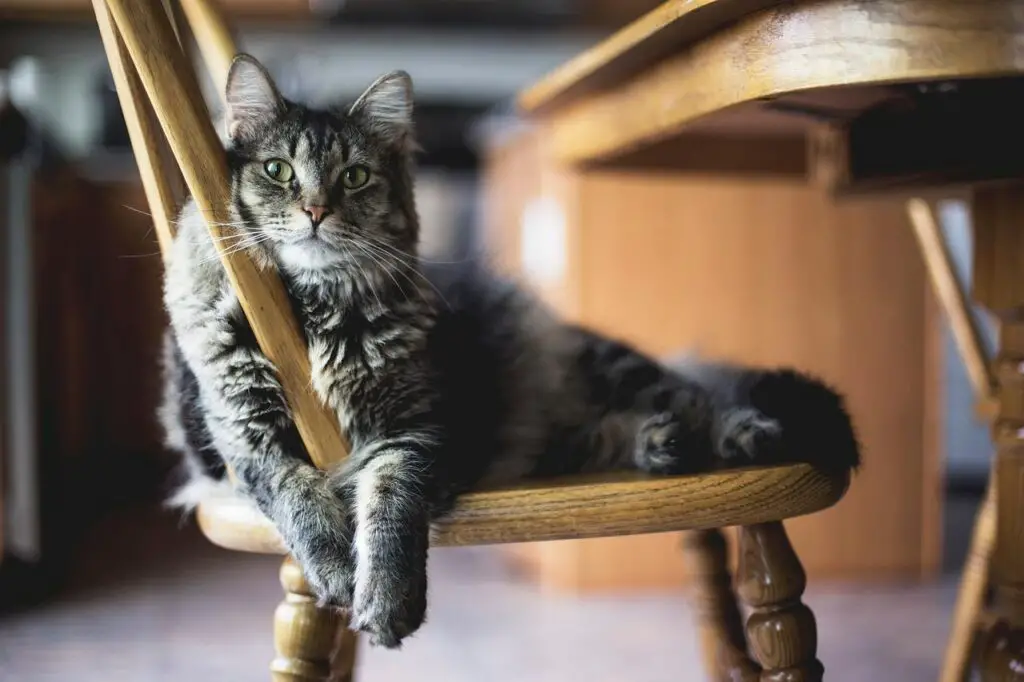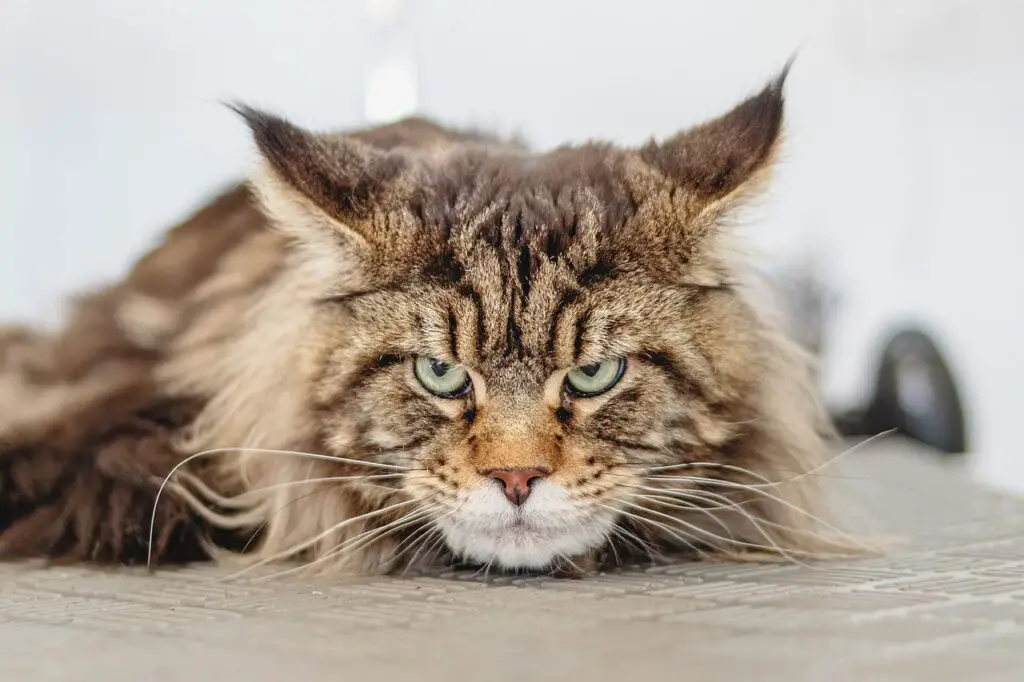Cats endure a lot in their lives: being carried around by their owners, being petted and cuddled, but being in a car for 8 hours is one of the most extreme experiences they’ll ever have.
A cat in a car for eight hours will become exhausted and restless. They may try to escape the vehicle or hide. If the cat is young or small, it may become injured from being bounced around in the car. Older cats may more likely have health problems confined in a small space.
Before you begin driving:
- Ensure your cat is comfortable in the carrier.
- Remember that cats are averse to loud noises.
- Keep the radio on low volume and avoid areas of high traffic.
- Make sure the carrier is quiet and secure. You can also use a catnip spray to keep your kitty from vomiting or being carsick.
If the cat vomits or becomes agitated, you should adjust the carrier to be comfortable for the animal.
Keeping a Cat Calm While Driving
Some crucial tips can make your cat as comfortable as possible while driving. First, you should ensure the car is not packed with items that could choke your cat. Keeping the radio low and avoiding slamming doors will help keep your pet calm. Ensure that you are careful not to turn on the air conditioning or any other vents while driving, as these could make your cat anxious. In addition, you should take turns and bumps slowly.
Besides making your cat comfortable, you should also provide your kitty with something to keep them busy and entertained. This is particularly helpful if your cat is meowing or yelling the entire time. It can also be soothing to talk to your cat during the ride. Alternatively, you can sign up for a monthly subscription service like Barkbox, which will send a box of toys and treats themed to your cat. These subscription boxes contain over $40 worth of toys and treats, and you can also get an extra box for free.
A calming collar is another effective tool, and it can be worn around your cat’s neck and emits pheromones to soothe it. A cat carrier is also a handy tool to keep your cat calm, and your cat can also wear it around the neck to keep it calm while traveling. Also, you can use a cat carrier as a light cover to reduce the amount of sun the cat is exposed to.

Your cat will be more comfortable if you have a car with air conditioning. Play some relaxing music while you drive. The cat should never be left unattended in a car, as extreme heat and cold can kill your cat within five to ten minutes. Make sure that your vehicle is well-ventilated. If it’s hot, turn off the heat. While cold, keep your cat warm.
Before you leave, you can prepare your cat for the long trip. Prepare for the drive before you get on the road. Cats can be sensitive to noise, and the window should be open. Never yell at other drivers, as this may make your cat feel tense. Also, consider securing the carrier with seat belts. A blanket for your cat can also help keep him calm.
Before leaving your house:
- Make sure your car is fully pet-proof.
- Make sure your cat is comfortable in the car.
- Ensure the car’s temperature is suitable for a feline, and do not speed!
A CBD-infused cat treat will help your cat relax during the long trip. And remember not to forget to take a few minutes for yourself, which will make your trip go by much more smoothly.
Taking Breaks During a Car Trip
While most cats don’t like change, they are adaptable and can tolerate long trips in a car as long as their basic needs are met. Cat carriers are not a popular option for long journeys, but car trips can be much more bearable for your cat. Breaks allow your cat to stretch and take in the scenery. If your cat doesn’t mind a break every few hours, take a few short breaks along the way.
As cats don’t drink water in a car, you should provide wet food in the morning and nighttime to keep them satisfied. This will also prevent your cat from getting dehydrated and may make the long trip more uncomfortable for your cat. Bathroom breaks are probably the most stressful part of a long trip. Your dog can use the world as a potty, but a cat needs special lighting, Yanni music, and a litter box.
If you are traveling alone, it may not be possible to take your cat with you each time you stop. If this is the case, make sure you plan stops for the driver, the cat, and other passengers. If you’re not taking breaks for your cat, your car may get hot or too cold. You can also play some relaxing music to ease the stress on your cat. If you’re giving your cat frequent breaks, they’ll eventually get used to traveling in the car.
Using a cat carrier can be an excellent option for traveling with a cat. Cat carriers can also be comfortable in a car and are great for allowing your cat to stretch their legs and have its own space. This way, your cat won’t feel stressed about the trip. And you can also use the car to teach your cat more about the environment. You can provide a quiet room or an open window to let your cat adjust to the new environment.
While traveling with a cat, it’s best to place it in a carrier when possible. The carrier should be placed behind the driver’s seat, not in the trunk. This way, the carrier will not move during acceleration, reducing the risk of injuries in a car crash. Similarly to humans, cats can get carsick and should avoid eating before a long journey. Avoid feeding your cat before a long trip, and consider asking your veterinarian for medication to reduce motion sickness.
Taking breaks during a car trip for your cat is another excellent option for reducing stress on your cat. Cats can be sensitive and stressed, and confining them in a car for hours can make the whole trip a disaster. Try to take several short breaks throughout the journey to break up the monotony of the car. This way, your cat won’t become as stressed about the car trip as he is about to.

Using Catnip Spray to Reduce Carsickness and Vomiting
One effective method is using catnip spray to reduce the symptoms of travel sickness and vomiting. While cats respond positively to catnip, the leaves are not always practical. Up to 90 percent of cats will not react to the scent. However, you should be aware that if you do not give your cat enough of the herb, it may harm your cat. Moreover, you should avoid giving your cat an excessive dose of catnip because it can cause an upset stomach.
Before you travel, ensure you have enough water for your pet. You can provide water at every rest stop, such as a bathroom, but do not leave a bowl in the carrier while driving. Water will likely spill, so offering the cat water bottles from home is best. However, tap water is acceptable. In this case, your cat should not drink water that does not taste like it.
As with any other pet, traveling with a cat can be stressful. Even though it may be just a short trip to the veterinarian, your cat may be prone to parasites. Check with your vet if your destination is tick-ridden. Additionally, it is recommended to stock up on pet medications and medical supplies. Be sure to bring a portable cooler box and ice packs for your cat to stay cool while traveling in the car.
Before using catnip spray to reduce the symptoms of travel sickness, always make a small patch test on your dog. Some people are allergic to certain oils and should do a test before using them on their pets. If your cat does not tolerate the spray, you should not use it, and this could lead to an allergic reaction, which can lead to death.
You can also apply Witch hazel to insect bites or stings. Witch hazel is distilled from the Hamamelis virginiana plant. It is a popular remedy for soothing skin and is readily available at drug stores. This essential oil can help alleviate itching and inflammation. A spray containing witch hazel can even help soothe mosquito bites.
Herbalists recommend a short “course” of herbs, enabling them to monitor the animal’s response and switch herbs if necessary. Not all herbs are safe for cats, and you should always consult a veterinarian if unsure whether an herbal preparation suits your cat. Herbalist Juliette de Bairacli Levy recommends rest and vinegar, and water wrap.
